Putty and putty are two equivalent names of the same composition used for cosmetic restoration of the surface before laying / applying the finish coating. There are many varieties of them. The most commonly used epoxy putty is a mixture made on the basis of epoxy resin, hardener and filler. For a small amount of work, you can make it yourself.
Varieties
Epoxy putties are divided into several types according to the nature of the filler. They can work on wood, metal, plastic or concrete. Such compositions are also in demand among motorists with self-repair.
The use of epoxy putty partially restores and strengthens the structure of the base.
to contents ↑On wood
Wood is a moody material. When the temperature decreases, it contracts significantly, when it increases, it expands, the same thing happens in the drying / wetting cycle. Epoxy hard putty for wood can cope with such material mobility. It differs from other formulations in the absence of shrinkage after drying. At the same time, it retains a certain elasticity, which is important when working with wood. In addition, it is perfectly processed and polished, it can be painted in any color you like.
Perhaps there is one single drawback - this putty can not be covered with stain. So, if it is planned to impregnate a wooden floor with a similar composition, it is better to refuse from epoxy puttying.
Epoxy putties for wood are used:
- for sealing cracks, potholes, scratches;
- for repairing wooden floors when covering cracks, joints and even irregularities;
- with skillful work, you can process doors, wooden windows, other objects of wooden furniture.
For metal
For leveling metal surfaces, epoxy putties are the best option. They have excellent adhesion. In addition, they lend themselves well to finishing sanding, which is important before final finishing (staining).
To perfectly align the metal sheet or any other object made of metal, compositions with filler in the form of the smallest sawdust from the same material from which the putty surface is made are used. Most often on sale you can find compositions with aluminum powder.
Skillful motorists successfully process a car body with such putty in the places of damage. The epoxy compound is especially beneficial for the long preservation of the car - it completely protects the metal from corrosion and rust.
Special brands of epoxy putty for metal are used in ship repair workshops where special properties of the applied mixture are required.
to contents ↑For plastic
The use of epoxy on plastic surfaces is possible due to its excellent adhesion, as well as elasticity.Due to such qualities, this repair material has found the most active application not only in the restoration of PVC pipes, but also in the repair of automotive vehicles.
So, for example, epoxy reducing compounds for plastic are used with great success to bring presentable used cars. Resin is able to fill in all the bumps, dents and bumps on the car body. The only not very pleasant moment is the high toxicity of the used repair material. Therefore, to protect the lungs during work, the mandatory use of respirators and protective masks.
The technology for using epoxy putties is practically no different from the usual mixtures used. Before direct application, you need to conduct a small visual analysis of damage to the surface (for example, a bumper). Next, work according to the well-known scheme:
- clean plastic surfaces from dirt;
- sand plastic parts;
- degrease surfaces with a special solvent;
- putty on the damaged surface with a rubber spatula;
- Sand the restored part first with coarse-grained sandpaper, then with fine-grained sandpaper.
After these simple operations, the resulting part is ready for finishing painting.
to contents ↑For concrete
When working with such surfaces, epoxy impregnations on concrete are most often used. Usually coarse sand is added to such compositions, in addition to cement, to increase the adhesion of the base to the subsequent finishing. After such an impregnation, the surface of the concrete becomes rough and completely ready for plastering.
For filling cracks in concrete, the usual epoxy adhesive (epoxy resin + hardener). It is prepared strictly according to the instructions, then fill the crack and smooth the surface. After complete polymerization, they are peeled with a sandpaper.
When restoring large potholes to reduce the cost of the mixture, filler is added to the epoxy adhesive - cement or fine sand.
to contents ↑Manufacturers
The variety of epoxy putties in the construction market is becoming a certain difficulty in choosing the right brand. And this is taking into account the fact that, as it turns out, it is quite possible to use inexpensive epoxy glue for work.
However, almost all well-known manufacturers of building and finishing materials produce epoxy putties for various types of surfaces. Among them are:
- Gypsum polymer;
- Craps;
- VOLMA;
- Ceresit;
- Bergauf;
- Brozex;
- Knauf;
- Litokol;
- Pro
- Unis
- Weber Gifas et al.
DIY making
Epoxy putty is not so difficult to do on your own. This will require epoxy resin and hardener, as well as fillers, which can vary depending on what surface you need to putty:
- Epoxy putty on wood - small sawdust mixed with gypsum or chalk.
- Epoxy putty for metal - metal filings, it is better precisely from the metal from which the base is made. Usually this is aluminum powder.
- Epoxy putty for plastic is a colored pigment so that the putty does not stand out against the general background, and finely ground fiberglass.
- For concrete - cement, or fiberglass, or sand.
The technology of work is quite simple, the main thing is to have at hand all the necessary components and observe the proportions.
It is important not to overdo it with the hardener. Its amount usually does not exceed 3% of the total resin volume at temperatures of +12 - 25 ° C. Moreover, if it is + 25 ° C outside, the amount of hardener can be reduced to 1.5%, and if + 12 ° C, then increase to 3% If the operating temperature range at which the work is supposed to be carried out varies between +13 - + 24 ° C, 2% hardener must be added to the composition.
An amount of filler is added by eye. Here, each master has his own recipe. It is important to get a mixture of the desired consistency so that it is convenient to work with. A correctly formulated epoxy putty retains elasticity for 1 hour, then the polymerization process begins, and it is no longer possible to touch the surface. After complete solidification, you can proceed to sanding.
Making epoxy putty with your own hands is fraught with some danger. This is due to the presence in the composition of the hardener. If you accidentally overdo it with its quantity, a violent reaction will begin with the release of a large amount of heat. Get burns at this moment - a couple of nonsense.
to contents ↑Application Features
It is not necessary to thoroughly prepare or prime the surface before applying the epoxy putty. It is enough to brush off the dust from it and degrease it well.
Since the mixture of epoxy resin and hardener, while observing the proportions, hardens rather slowly, you can take your time and mix the mixture well until smooth. It is better to use a wooden spatula for this, and apply the solution with a spatula.
Remember, from the moment the composition is applied, it takes about an hour before the polymerization begins. There is a lot of time to fix small flaws when applying putty. After this, after about six hours, the mixture finally solidifies. After another 2-3 hours, you can begin work on surface treatment and its preparation for applying the paint layer.
Epoxy putty is convenient, but quite expensive, if you buy a ready-made composition, material for the restoration of various types of substrates. The most optimal option is its use in self-repair of a car.

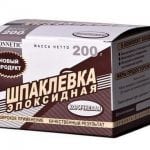
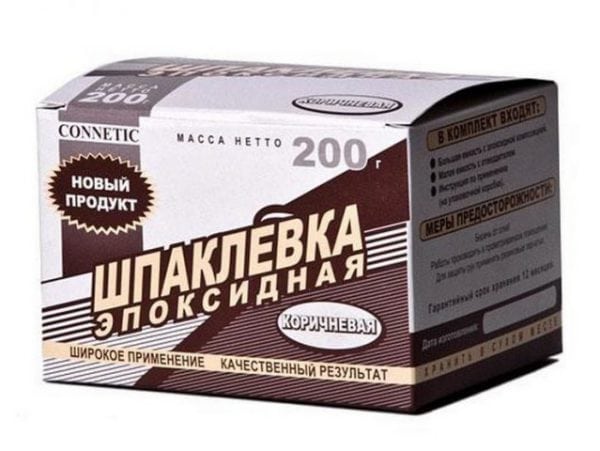
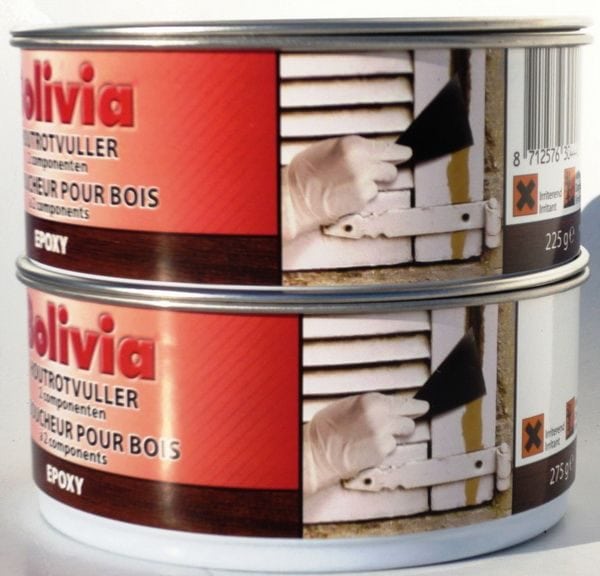
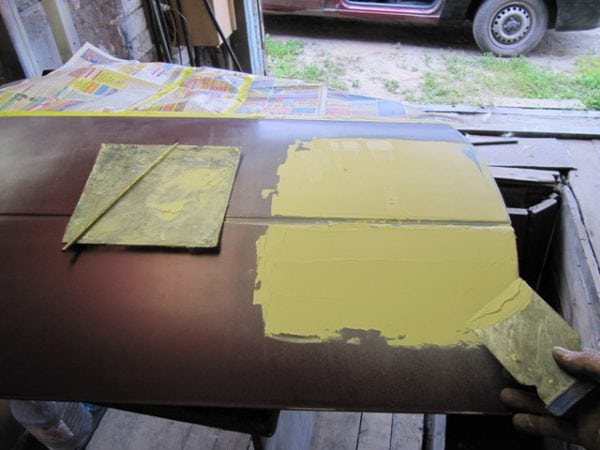
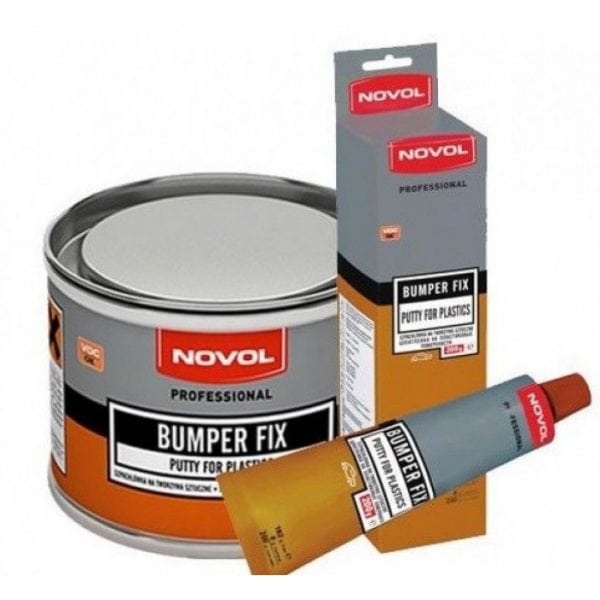
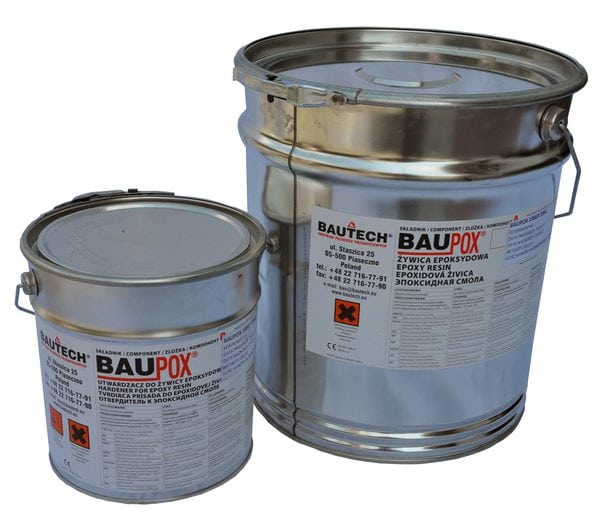
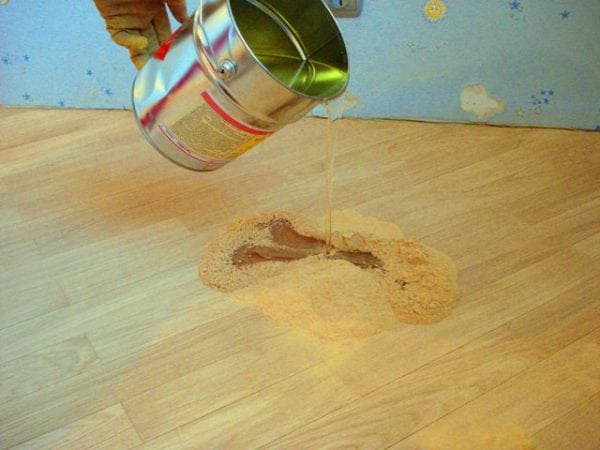



Thanks for the sensible epoxy article.